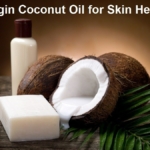by Dr. Mercola
Soybean oil is the most common oil used in the US, but this is a relatively new phenomenon. Prior to 1900, cooking was done with lard and butter, and the processed foods that are now primary sources of soybean oil (and other soy ingredients) were nonexistent.
In the 1950s, saturated fats were condemned on the basis of them raising your cholesterol and causing heart disease – a theory that has since been proven wrong, but which is still lingering in medical offices and public nutrition regulations.
Partially hydrogenated soybean oil was developed to replace saturated fats like butter and lard in the food supply. Not only did consumers embrace it, but food manufacturers did even more so because of its low cost, long shelf-life, and stability at room temperature.
There was just one problem: partially hydrogenated oils are sources of trans fats, which are now known to cause chronic health problems such as obesity, asthma, auto-immune disease, cancer, and bone degeneration.
Yet, even if you take the hydrogenation process out of the picture, soybean oil is still detrimental to your health. While trans fats are now being pulled out of processed foods due to their extreme health risks, soybean oil is still fair game… but it shouldn’t be – and here’s why.
Soybean Oil Causes Obesity and Diabetes – Coconut Oil Does Not
Researchers recently designed a series of four diets to investigate the effects of saturated fats (coconut oil) versus unsaturated fat (soybean oil) as well as fructose on obesity and diabetes.1
Their results show just how very backward most nutritional advice is when suggesting vegetable oils are better than saturated fats…Mice fed a high-fat diet from coconut oil remained healthy, but when soybean oil was added in they had significant increases in weight gain, body fat, diabetes, glucose intolerance, and insulin resistance.
The addition of soybean oil proved to be even worse than fructose, the latter of which did lead to rectal prolapse and fatty liver.
The soybean-oil diet was also found to upregulate genes involved in obesity, diabetes, inflammation, mitochondrial function, and cancer. The researchers concluded:
“Taken together, our results indicate that in mice a diet high in soybean oil is more detrimental to metabolic health than a diet high in fructose or coconut oil.”
GM Soybean Oil Being Offered as a ‘Healthy’ Alternative
Conventional soybean oil contains about 55 percent linoleic acid, which is a polyunsaturated fat. DuPont has created a genetically modified (GM) soybean that is lower in linoleic acid and higher in oleic acid, which is the heart-healthy type found in olive oil.
As a result, DuPont claims the oil made from their GM soybeans, called Plenish, is “heart healthy.”2 Monsanto also launched Vistive low-linoleic soybeans called Vistive Gold, which are stable without requiring hydrogenation. They’re expected to be commercially available in 2015 “pending key import approvals.”
But are GM soybeans really healthier than non-GM varieties? According to a study presented at the Endocrine Society’s 97th annual meeting in San Diego, California, just barely.
The GM soybean oil posed all the same health problems as conventional soybean oil, including inducing obesity, diabetes, and fatty liver in mice. It did not appear to cause insulin resistance, which was its one purported benefit.
Still, swapping out regular soybean oil for a GM version is clearly not the answer. No one knows what the long-term health effects will be, and what we’ve seen with current GM products on the market provides little reassurance.
In fact, 94 percent of the soybeans grown in the US are already genetically modified;3 they’re just modified to be herbicide tolerant and not necessarily low in linoleic acid. And this is reason alone to avoid their use…
Why Consuming GM Soy Is a Bad Idea…
Roundup Ready soy is now being cultivated on a massive scale across the globe, along with the exponentially increasing use of the herbicide Roundup. Research has shown there are significant compositional differences between GM soybeans and non-GM varieties4
Contrary to industry claims, the study found that they also differ in terms of nutritional quality, with organic soybeans having the healthiest nutritional profile. According to the authors,
“This study rejects that genetically modified soy is “substantially equivalent” to non-GM soybeans.”
Further, Monsanto’s “Roundup Ready” soybeans are genetically modified to survive otherwise lethal doses of glyphosate, the active ingredient in the company’s herbicide Roundup.
Research confirmed GM soy contained high residues of glyphosate,5 which may be at least partially to blame for rising rates of numerous chronic diseases in Westernized societies, according to research published in Entropy.6
Authored by Dr. Stephanie Seneff, a research scientist at the Massachusetts Institute of Technology (MIT) and Anthony Samsel, a retired science consultant, the report argues that glyphosate residues “enhance the damaging effects of other food-borne chemical residues and toxins in the environment to disrupt normal body functions and induce disease.”
Monsanto has steadfastly claimed that Roundup is harmless to animals and humans because the mechanism of action it uses (which allows it to kill weeds), called the shikimate pathway, is absent in all animals.
However, the shikimate pathway is present in bacteria, and that’s the key to understanding how it causes such widespread systemic harm in both humans and animals.
Glyphosate causes extreme disruption of the microbe’s function and lifecycle. What’s worse, glyphosate preferentially affects beneficial bacteria, allowing pathogens to overgrow and take over.
In the interview above, Dr. Seneff reviews a variety of chronic diseases, explaining how glyphosate contributes to each condition. So to learn more, I urge you to listen to it in its entirety. It’s quite eye opening.
This includes (but is not limited to) the following. And, by the way, if you assume the US Department of Agriculture (USDA) is on top of this, and tests the food Americans eat for unsafe levels of glyphosate… don’t. A USDA spokesman stated the agency had decided against testing for glyphosate in food because the tests are “extremely expensive… to do on a regular basis.”7
- Autism
- Gastrointestinal diseases such as inflammatory bowel disease, chronic diarrhea, colitis, and Crohn’s disease
- Obesity
- Allergies
- Cardiovascular disease
- Depression
- Cancer
- Infertility
- Alzheimer’s disease
- Parkinson’s disease
- Multiple sclerosis
- ALS and more
Soybean Oil Throws Off Your Omega-3 to Omega-6 Ratio
Public health agencies have long promoted getting at least 5 to 10 percent of your daily energy requirement from polyunsaturated omega-6 fats, like vegetable oils, and teach that reducing omega-6 intakes from current levels would likely increase your risk for heart disease.
Unfortunately, this advice will worsen rather than improve your health, as eating too much damaged omega-6 fat and too little omega-3 sets the stage for the very health problems you seek to avoid, including cardiovascular disease, cancer, depression and Alzheimer’s, rheumatoid arthritis, and diabetes, just to name a few.
Omega-6 fats are pro-inflammatory and contribute to insulin, leptin, and resistance, altering your mood, and impairing learning and cell repair. Most people, especially Americans, are guilty of this lopsided omega-3 to omega-6 ratio, and to correct it, you typically need to do two things:
- Significantly decrease omega-6 by avoiding processed foods and foods cooked at high temperatures using vegetable oils
- Increase your intake of heart-healthy animal-based omega-3 fats, such as krill oil and sardines
Both omega-3 and omega-6 fats are PUFAs (polyunsaturated fatty acids) and they are essential to your health, but when omega-6 is consumed in excess, it becomes problematic — and even more so if it’s damaged through processing. One of the problems with PUFAs is that they are very chemically unstable, and highly susceptible to being altered and denatured by heat and exposure to light and air.
When you eat too many PUFAs, they are increasingly incorporated into your cell membranes. Because these fats are unstable, your cells become fragile and prone to oxidation, which leads to all sorts of health problems, such as atherosclerosis. In fact, in one study when participants replaced saturated animal fats with omega-6 vegetable oils, it lead to an increased risk of death among patients with heart disease.8
The omega-6 linoleic acid group had a 17 percent higher risk of dying from heart disease during the study period, compared with 11 percent among the control group (those who did not receive any particular dietary advice). The omega-6 group also had a higher risk of all-cause mortality.
Trans Fats Replacements May Be No Better…
Most of you reading this are now well aware of the dangers of partially hydrogenated soybean oil (i.e. trans fats), and that the US Food and Drug Administration (FDA) is in the process of banning them completely. That’s great news, but the question is, what is trans fat being replaced with?
The answer is that the oils they’re currently using in lieu of trans fats create toxic oxidation products, which in fact may be more toxic than trans fat. Nina Teicholz is an investigative journalist and author of The Big Fat Surprise: Why Butter, Meat, and Cheese Belong in a Healthy Diet. An excerpt from her book reads:
“I stumbled on this topic because a vice president of [IOI] Loders Croklaan, a big fats and oils producer, said to me, ‘I just heard this terrifying talk by a man in a company who does all the cleaning for fast food restaurants.’… He said they have been having problems since restaurants started getting rid of trans fats in their fryers around 2007… The new oils were building up gunk in the drains and on the walls.
This kind of gunk would harden, and workers would scrape for days and not be able to get it off. The conventional cleaners didn’t work anymore. It’s turning out to be these highly volatile airborne chemicals. When the restaurants’ uniforms would be cleaned, the chemicals were so volatile that they would have problems of piles of uniforms spontaneously combusting in the back of trucks. And then they would go to the dryers. The heat of the dryers, even after the restaurant uniforms were cleaned, would cause fires.” [Emphasis mine]
The other issue is that, as trans fats are being replaced, restaurants and food service operations are reverting back to using regular vegetable oils (such as peanut, corn, and soy oil) for frying. But these oils still have the worrisome problem of degrading into toxic oxidation products when heated! More than 100 dangerous oxidation products have been found in a single piece of chicken fried in vegetable oils, Nina says.
“That’s the reason that vegetable oils were hardened to be able to be used in the first place,’ she says. ‘They couldn’t be used simply as oil. Once there was a technology that figured out how to use them just as oils by actually changing the fatty acid structure in oils, vegetable oils in bottles like Wesson Oil and canola oils came to the market, in the 1940s. But even back then, in a number of animal experiments that were done, there were tremendously worrying results. Animals would get cirrhosis of the liver or enlarged liver. And then when they were eating heated vegetable oils, they would die prematurely.'”
How to Focus on Truly Healthy Fats and Oils
Many people need to increase the healthy fat in their diet to 50 to 85 percent of their daily calories. This includes not only saturated fat but also monounsaturated fats (from avocados and nuts) and omega-3 fats. When it comes to cooking fats, few compare to tallow and lard in terms of health benefits and safety, although coconut oil is a good plant-based choice. Keep in mind that most processed foods are high in omega-6 fats, including soybean oil, and consuming them will only continue to worsen your omega-3 to omega-6 ratio. The primary sources of omega-6 that you would benefit from reducing include
- Corn oil
- Canola oil
- Soy oil
- Hydrogenated or partially hydrogenated fats
- Margarine
- Shortening
On the other hand, healthy oils include the following. Feel free to include these liberally in your diet and, for more information on healthy fats, be sure to read my nutrition plan:
- High-quality extra-virgin olive oil (use this for cold dishes, not for cooking)
- Coconut oil
- Avocados
- Organic, grass-fed butter
- Rendered fat from cooking healthy animals can also be used
Read the full article here.
Sources and References:




 Research Continues to Show Virgin Coconut Oil's Effectiveness in Treating Cancer
Research Continues to Show Virgin Coconut Oil's Effectiveness in Treating Cancer Coconut Oil Continues to Benefit Alzheimer's Patients over Drugs as Studies Continue for Neurological Benefits
Coconut Oil Continues to Benefit Alzheimer's Patients over Drugs as Studies Continue for Neurological Benefits How the Simple High-Fat Low-Carb Ketogenic Diet Continues to Change People's Lives
How the Simple High-Fat Low-Carb Ketogenic Diet Continues to Change People's Lives New Studies Continue to Show that Coconut Oil is the Best Oil for Treating Skin Conditions and Maintaining Healthy Skin and Teeth
New Studies Continue to Show that Coconut Oil is the Best Oil for Treating Skin Conditions and Maintaining Healthy Skin and Teeth New Study Confirms Health Benefits of Coconut Oil and USDA False Claims Against It
New Study Confirms Health Benefits of Coconut Oil and USDA False Claims Against It
One Comment